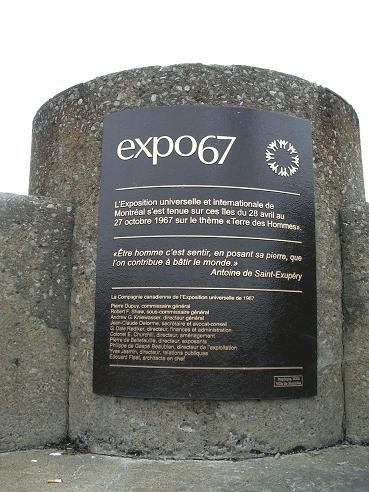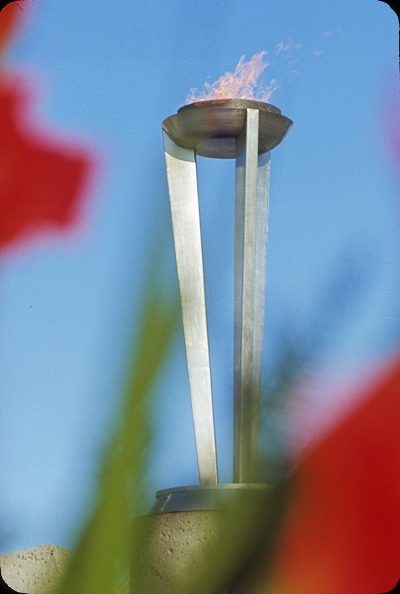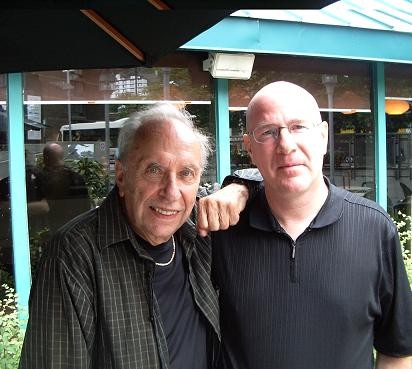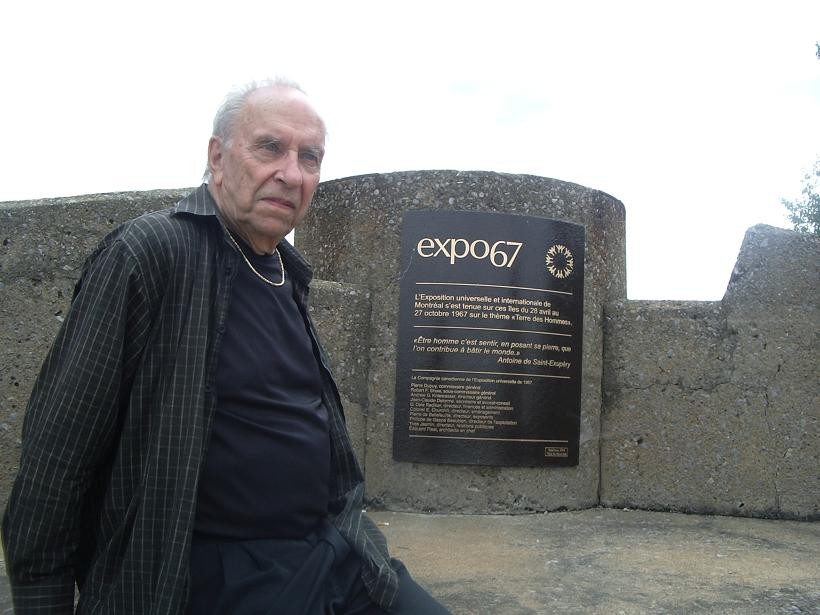
Photo credit: © John Whelan, Place des Nations, Île Ste-Hélène, Montréal, July 12, 2009
With enormous pride and fond memories, Yves Jasmin, Director of Information, Publicity and Public Relations for Expo 67 strikes a pose at the base where a long tall caldron herald the Expo flame between April 27 to October 29, 1967.
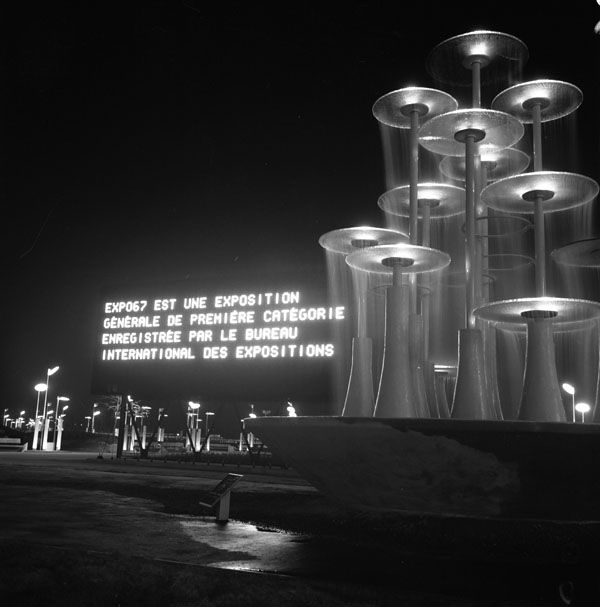
Photo
credit: © Library and Archives of Canada
Phraseology: Why it was called Expo 67 and not the Montréal World's Fair
There’s an interesting story in how the name, Expo 67, was coined:
World exhibitions are either Universal or Specialized and are regulated by a Paris-based body of 88 nations, created in 1928, the Bureau of International Exhibitions (BIE).
There were three candidates for a 1967 Universal Exhibition at the March 1960 reunion of the BIE: Austria withdrew its candidacy and the following contest for the 1967 date was won on May 5th 1960 by the USSR, after a long five-vote session. But the USSR later withdrew and on November 13 1962, Canada was awarded the Exhibition.
"The Canadian Corporation for the 1967 Exhibition was created on
December 20 1962, barely a month later, demonstrating that things can
really move along when there’s a political will," explained Yves Jasmin in
two e-mail correspondences to the proprietor of this website. "Prime
Minister Diefenbaker appointed Paul Bienvenu as Commissioner General and
Cecil Carsley as Deputy Commissioner General on January 22, 1963: the
first administration."
"The official name was The 1967
Universal and International Exhibition in Montréal. L'Exposition
universelle et internationale de 1967 à Montréal. A bit of a
mouthful. It needed a more convenient name," said Yves. While
the length of the name was but one factor for calling it Expo 67, there
was a second factor behind the decision.
"Carsley did not
want to call it a Fair. The New York World’s Fair (1964-65) was in full
swing and fairs have a commercial overtone while the Montréal event was
thematic and NOT a fair," said Yves. "Mayor Drapeau suggested the
name Expo 67, recalling a 1937 Maurice Chevalier song La p'tite dame de
l'Expo, a girlfriend he had met at the spectacular 1937 "specialized"
exhibition [Les Arts et Métiers] in Paris." Yves also noted in his
correspondence that "Drapeau's suggestion carried
unanimity."
When the first administration resigned in 1964, a
second administration was chosen and Ambassador Pierre Dupuy was named
Commissioner General and Robert F. Shaw, Deputy Commissioner
General.
When coined as the title for the exhibition, the Expo 67
phraseology did not resonate well with the English press in Montréal. Yves
explains: "I waged a three-year battle with the Gazette and the Montréal
Star who fought hard to get Expo to change its name to Montréal's World
Fair. For two of those years we were in direct conflict with the New York
World's Fair, still the Montréal English speaking journalists fought Expo
tooth and nail, saying that Expo sounded like a new brand of cigarette,
that Expo did not convey the significance of an Exhibition,
etc."
Coining it as Expo 67 proved to be a wise decision that had a
historical benefit: because of the enormous success of Expo 67, it has
become common practice for most countries to utilize the "Expo"
phraseology when naming their event. "When Japan had its 1970 World
Exhibition, they asked our permission to call it Expo 70. It was a very
gracious move on their part. We didn't even have the creative rights of
the name. And now Expo has become a household word all over the world,"
explained Yves.
One other related footnote concerning Expo
67: A professor in Québec City recently referred to it as being
Québec's finest achievement in the province’s history with no
acknowledgement about it being a Canadian success story. Let's be clear
about this, says Yves: while Montréal and the province of Québec played
important roles in the success of Expo 67, the exposition was a Canadian
accomplishment made possible by many contributors from all regions of
Canada.
To put this into perspective, imagine if
Toronto had played host to Expo and forty-two years later an Ontario
professor laid claim to an audience in Ottawa that Expo 67 was an Ontario
achievement, ignoring all the other contributors from across Canada. Any
academic dissertation made by a professor with this kind of claim whether
it was before an audience, in a thesis paper, a magazine article or a
history book, would completely fall apart.
Yves has already
made mention in an audio interview (that is readily available on this
site) that Expo 67 was an all-Canada achievement — and who should know
better than the one who was directly in charge of Information, Publicity
and Public Relations for Expo 67.
Proprietor for the Expo 67 in Montréal website
July 18, 2009
